-
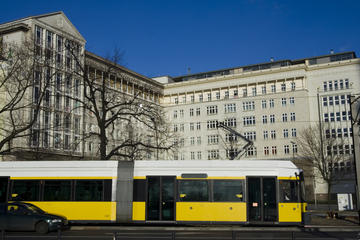 Karl-Marx-Allee (Stalinallee)
Karl-Marx-Allee (Stalinallee) Karl-Marx-Allee was the most famous street in East Berlin. Originally known as Große Frankfurter Straße, it was renamed Stalinallee on Dec. 21, 1949, Stalins 70th birthday. The street was built as part of the Soviets reconstruction plan and included residential blocks
Karl-Marx-Allee (Stalinallee)
Karl-Marx-Allee (Stalinallee) Karl-Marx-Allee was the most famous street in East Berlin. Originally known as Große Frankfurter Straße, it was renamed Stalinallee on Dec. 21, 1949, Stalins 70th birthday. The street was built as part of the Soviets reconstruction plan and included residential blocks
-
 KaDeWe (Kaufhaus des Westens)
KaDeWe (Kaufhaus des Westens) A shopping landmark, the KaDeWe is Berlin’s most famous trademark department store. Since 1907, this luxurious and extravagant center has been lowering its iron gates for customers for an exciting shopping adventure. You can find some of the most famous fashion design
KaDeWe (Kaufhaus des Westens)
KaDeWe (Kaufhaus des Westens) A shopping landmark, the KaDeWe is Berlin’s most famous trademark department store. Since 1907, this luxurious and extravagant center has been lowering its iron gates for customers for an exciting shopping adventure. You can find some of the most famous fashion design
-
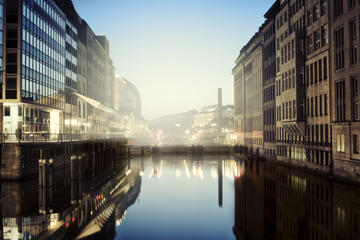 Jungfernstieg
Jungfernstieg Jungfernstieg is Hamburgs most popular shopping street, located along the Inner Alster Lake. Its name originates from an old tradition of families who would take their unmarried daughters or maidens (Jungfern) to walk around on this promenade. Jungfernstieg was also the first street
Jungfernstieg
Jungfernstieg Jungfernstieg is Hamburgs most popular shopping street, located along the Inner Alster Lake. Its name originates from an old tradition of families who would take their unmarried daughters or maidens (Jungfern) to walk around on this promenade. Jungfernstieg was also the first street
-
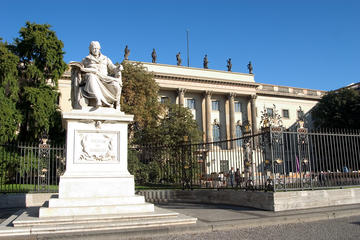 Humboldt University
Humboldt University Humboldt University was founded in Berlin in 1810 and is the citys oldest university. It was founded by the liberal Prussian educational reformer and linguist Wilhelm von Humboldt. He was the first to introduce the unity of research and teaching, and his university model strong
Humboldt University
Humboldt University Humboldt University was founded in Berlin in 1810 and is the citys oldest university. It was founded by the liberal Prussian educational reformer and linguist Wilhelm von Humboldt. He was the first to introduce the unity of research and teaching, and his university model strong
-
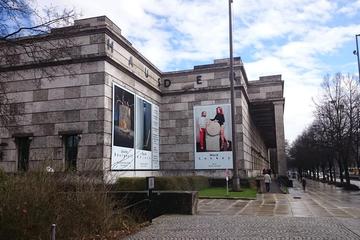 House of the Arts (Haus der Kunst)
House of the Arts (Haus der Kunst) The House of the Arts, or Haus der Kunst in German, is an art museum in Munich that was originally founded by Adolf Hitler and the Nazis in 1937. It originally housed Hitlers vision of what great German art was, and the exhibits were folk art displaying Nazi idea
House of the Arts (Haus der Kunst)
House of the Arts (Haus der Kunst) The House of the Arts, or Haus der Kunst in German, is an art museum in Munich that was originally founded by Adolf Hitler and the Nazis in 1937. It originally housed Hitlers vision of what great German art was, and the exhibits were folk art displaying Nazi idea
-
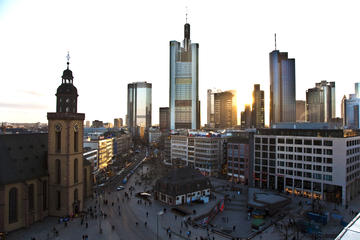 Hauptwache
Hauptwache Located a few blocks north of Römerberg square, Hauptwache is one of Frankfurt’s most famous public squares, leading onto the city’s principal shopping street, the Zeil. The square takes its name from the restored 1729 baroque building of the same name, the former headquarters of the ci
Hauptwache
Hauptwache Located a few blocks north of Römerberg square, Hauptwache is one of Frankfurt’s most famous public squares, leading onto the city’s principal shopping street, the Zeil. The square takes its name from the restored 1729 baroque building of the same name, the former headquarters of the ci
-
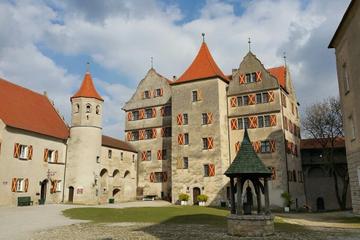 Harburg
Harburg With the majestic Harburg Castle looming on a hilltop above the scenic River Wörnitz and a cluster of half-timbered buildings that appear plucked from medieval times, the sleepy town of Harburg entices many Romantic Road travelers to pull over. It’s impossible to miss the castle from the r
Harburg
Harburg With the majestic Harburg Castle looming on a hilltop above the scenic River Wörnitz and a cluster of half-timbered buildings that appear plucked from medieval times, the sleepy town of Harburg entices many Romantic Road travelers to pull over. It’s impossible to miss the castle from the r
-
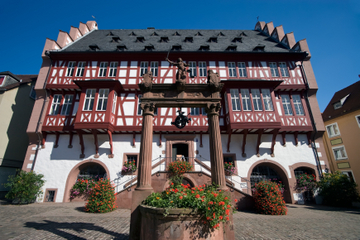 Hanau
Hanau As the birthplace of fairytale maestros the Brothers Grimm, the pretty North German town of Hanau is inextricably tied to its famous former residents. The beloved duo are honored by the late 19th-century bronze statue ‘Nationaldenkmal Brüder Grimm’ that dominates the central Marktplatz, as w
Hanau
Hanau As the birthplace of fairytale maestros the Brothers Grimm, the pretty North German town of Hanau is inextricably tied to its famous former residents. The beloved duo are honored by the late 19th-century bronze statue ‘Nationaldenkmal Brüder Grimm’ that dominates the central Marktplatz, as w
-
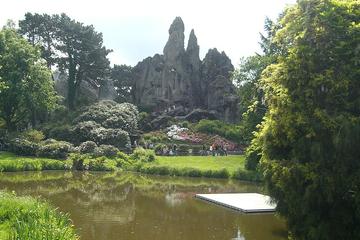 Hamburg Zoo (Tierpark Hagenbeck)
Hamburg Zoo (Tierpark Hagenbeck) One of the first zoos to house animals in moated, open enclosures rather than cages, the Hamburg Zoos exhibits are spread over dozens of acres, where animals from all around the world live. Visitors will find elephants and giraffes from Africa, Asian elephants, tig
Hamburg Zoo (Tierpark Hagenbeck)
Hamburg Zoo (Tierpark Hagenbeck) One of the first zoos to house animals in moated, open enclosures rather than cages, the Hamburg Zoos exhibits are spread over dozens of acres, where animals from all around the world live. Visitors will find elephants and giraffes from Africa, Asian elephants, tig
-
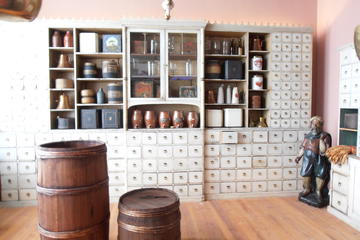 Hamburg Museum
Hamburg Museum What are the origins of Hamburg, what happened to the Hanseatic League and how did the HafenCity district evolve? All these questions and more are answered in the Hamburg Museum. The museum opened in 1922 as the Museum of Hamburg History and has since been able to amass the largest
Hamburg Museum
Hamburg Museum What are the origins of Hamburg, what happened to the Hanseatic League and how did the HafenCity district evolve? All these questions and more are answered in the Hamburg Museum. The museum opened in 1922 as the Museum of Hamburg History and has since been able to amass the largest
-
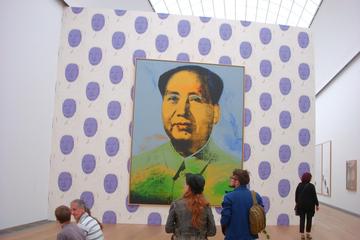 Hamburger Bahnhof
Hamburger Bahnhof The Hamburger Bahnhof houses Berlins Museum for Contemporary Art. Its Berlins most important exhibition space dedicated to contemporary art from the 1950s to present day. Work from Andy Warhol, Joseph Beuys, Keith Haring and many other innovative contemporary artists can be found
Hamburger Bahnhof
Hamburger Bahnhof The Hamburger Bahnhof houses Berlins Museum for Contemporary Art. Its Berlins most important exhibition space dedicated to contemporary art from the 1950s to present day. Work from Andy Warhol, Joseph Beuys, Keith Haring and many other innovative contemporary artists can be found
-
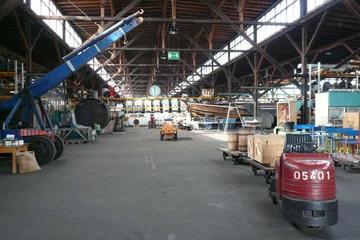 Hafenmuseum Hamburg
Hafenmuseum Hamburg The Hafenmuseum Hamburg is located in the remaining historical part of the free port built over a hundred years ago and showcases the history and operation of this important harbor. Due to container shipping, the look of the port has changed profoundly over the last several dec
Hafenmuseum Hamburg
Hafenmuseum Hamburg The Hafenmuseum Hamburg is located in the remaining historical part of the free port built over a hundred years ago and showcases the history and operation of this important harbor. Due to container shipping, the look of the port has changed profoundly over the last several dec
-
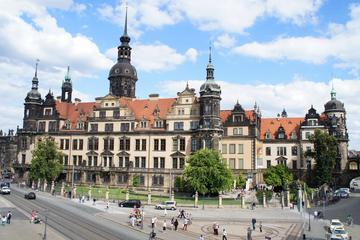 Green Vault
Green Vault The Green Vault is one of the city museums in Dresden, Germany, and it is located in the Dresden Royal Palace. This collection of historical art and antiques has been called one of the greatest treasure chests in Europe. It is divided into two sections, the Historic Green Vault and the
Green Vault
Green Vault The Green Vault is one of the city museums in Dresden, Germany, and it is located in the Dresden Royal Palace. This collection of historical art and antiques has been called one of the greatest treasure chests in Europe. It is divided into two sections, the Historic Green Vault and the
-
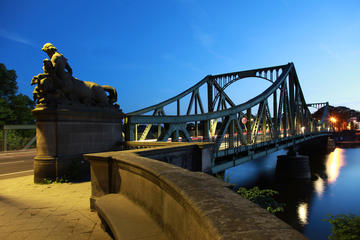 Glienicke Bridge
Glienicke Bridge Glienicke Bridge is located in the southwestern corner of the Berlin region and crosses the Havel River, which connects Glienicke Lake and Jungfernsee Lake. When you cross the bridge from east to west, you leave the Berlin region and enter the surrounding region of Brandenburg. Th
Glienicke Bridge
Glienicke Bridge Glienicke Bridge is located in the southwestern corner of the Berlin region and crosses the Havel River, which connects Glienicke Lake and Jungfernsee Lake. When you cross the bridge from east to west, you leave the Berlin region and enter the surrounding region of Brandenburg. Th
-
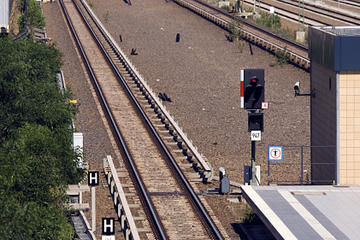 Gleis 17, Grunewald
Gleis 17, Grunewald Track 17 (Gleis 17 in German) at the Grunewald S-Bahn station in Berlin is a memorial site that honors the Jewish citizens who were deported by Deutsche Reichsbahn during the Nazi era. Deutsche Reichsbahn was the company that preceeded Deutsche Bahn, the current national railwa
Gleis 17, Grunewald
Gleis 17, Grunewald Track 17 (Gleis 17 in German) at the Grunewald S-Bahn station in Berlin is a memorial site that honors the Jewish citizens who were deported by Deutsche Reichsbahn during the Nazi era. Deutsche Reichsbahn was the company that preceeded Deutsche Bahn, the current national railwa
-
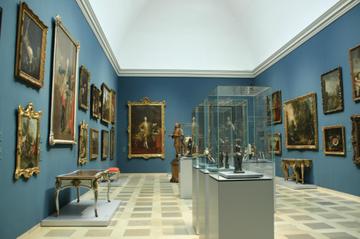 German National Museum (Germanisches Nationalmuseum)
German National Museum (Germanisches Nationalmuseum) Founded in 1852, the home of the German National Museum has extended over the years as the collection has increased; it was originally housed in a 14th-century former monastery, to which a Neo-Gothic extension was added in the 1900s. Extensive b
German National Museum (Germanisches Nationalmuseum)
German National Museum (Germanisches Nationalmuseum) Founded in 1852, the home of the German National Museum has extended over the years as the collection has increased; it was originally housed in a 14th-century former monastery, to which a Neo-Gothic extension was added in the 1900s. Extensive b
-
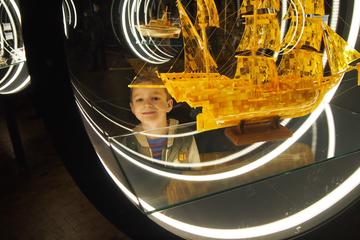 German Museum of Technology
German Museum of Technology The German Museum of Technology in Berlin provides an in-depth look at Germanys technical history through its 25,000 square meters (over 269,000 square feet) of floor space with exhibits about technology on land, on water and in the air. Topics include traffic, communic
German Museum of Technology
German Museum of Technology The German Museum of Technology in Berlin provides an in-depth look at Germanys technical history through its 25,000 square meters (over 269,000 square feet) of floor space with exhibits about technology on land, on water and in the air. Topics include traffic, communic
-
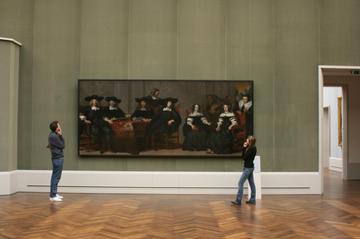 Gemaeldegalerie (Gemälde Gallery)
Gemaeldegalerie (Gemälde Gallery) Harboring some of the world’s greatest examples of European art, the Gemäldegalerie belongs to the Staatliche Museen zu Berlin, an affiliation of 19 museums found in five locations throughout Berlin. It forms part of the Kulturforum, a multi-faceted cultural cente
Gemaeldegalerie (Gemälde Gallery)
Gemaeldegalerie (Gemälde Gallery) Harboring some of the world’s greatest examples of European art, the Gemäldegalerie belongs to the Staatliche Museen zu Berlin, an affiliation of 19 museums found in five locations throughout Berlin. It forms part of the Kulturforum, a multi-faceted cultural cente
-
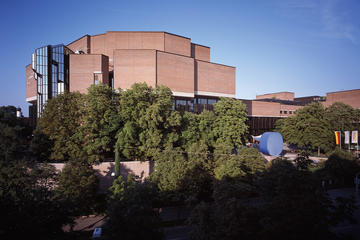 Gasteig
Gasteig The exterior of the Gasteig hardly reveals the cultural centers dedication to the arts, but inside, the halls host some of the most outstanding performers that come to Munich. Home to the Munich Philharmonic Orchestra, the Richard Strauss Conservatory, the Volkshochschule (education), and
Gasteig
Gasteig The exterior of the Gasteig hardly reveals the cultural centers dedication to the arts, but inside, the halls host some of the most outstanding performers that come to Munich. Home to the Munich Philharmonic Orchestra, the Richard Strauss Conservatory, the Volkshochschule (education), and
-
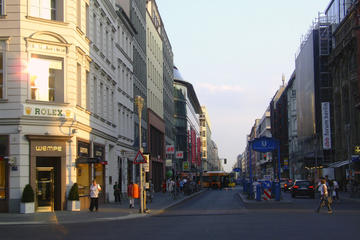 Friedrichstrasse
Friedrichstrasse Friedrichstrasse runs north to south through the center of Berlin, while during the Cold War, the Berlin Wall cut through this street. The Friedrichstrasse S-bahn and U-bahn station was on the East, but trains from the West were still able to stop there so passengers could transfe
Friedrichstrasse
Friedrichstrasse Friedrichstrasse runs north to south through the center of Berlin, while during the Cold War, the Berlin Wall cut through this street. The Friedrichstrasse S-bahn and U-bahn station was on the East, but trains from the West were still able to stop there so passengers could transfe
Total
2004 -travel
FirstPage PreviousPage NextPage LastPage CurrentPage:
5/101 20-travel/Page GoTo Page:
 Karl-Marx-Allee (Stalinallee)
Karl-Marx-Allee (Stalinallee) Karl-Marx-Allee was the most famous street in East Berlin. Originally known as Große Frankfurter Straße, it was renamed Stalinallee on Dec. 21, 1949, Stalins 70th birthday. The street was built as part of the Soviets reconstruction plan and included residential blocks
Karl-Marx-Allee (Stalinallee)
Karl-Marx-Allee (Stalinallee) Karl-Marx-Allee was the most famous street in East Berlin. Originally known as Große Frankfurter Straße, it was renamed Stalinallee on Dec. 21, 1949, Stalins 70th birthday. The street was built as part of the Soviets reconstruction plan and included residential blocks
 KaDeWe (Kaufhaus des Westens)
KaDeWe (Kaufhaus des Westens) A shopping landmark, the KaDeWe is Berlin’s most famous trademark department store. Since 1907, this luxurious and extravagant center has been lowering its iron gates for customers for an exciting shopping adventure. You can find some of the most famous fashion design
KaDeWe (Kaufhaus des Westens)
KaDeWe (Kaufhaus des Westens) A shopping landmark, the KaDeWe is Berlin’s most famous trademark department store. Since 1907, this luxurious and extravagant center has been lowering its iron gates for customers for an exciting shopping adventure. You can find some of the most famous fashion design
 Jungfernstieg
Jungfernstieg Jungfernstieg is Hamburgs most popular shopping street, located along the Inner Alster Lake. Its name originates from an old tradition of families who would take their unmarried daughters or maidens (Jungfern) to walk around on this promenade. Jungfernstieg was also the first street
Jungfernstieg
Jungfernstieg Jungfernstieg is Hamburgs most popular shopping street, located along the Inner Alster Lake. Its name originates from an old tradition of families who would take their unmarried daughters or maidens (Jungfern) to walk around on this promenade. Jungfernstieg was also the first street
 Humboldt University
Humboldt University Humboldt University was founded in Berlin in 1810 and is the citys oldest university. It was founded by the liberal Prussian educational reformer and linguist Wilhelm von Humboldt. He was the first to introduce the unity of research and teaching, and his university model strong
Humboldt University
Humboldt University Humboldt University was founded in Berlin in 1810 and is the citys oldest university. It was founded by the liberal Prussian educational reformer and linguist Wilhelm von Humboldt. He was the first to introduce the unity of research and teaching, and his university model strong
 House of the Arts (Haus der Kunst)
House of the Arts (Haus der Kunst) The House of the Arts, or Haus der Kunst in German, is an art museum in Munich that was originally founded by Adolf Hitler and the Nazis in 1937. It originally housed Hitlers vision of what great German art was, and the exhibits were folk art displaying Nazi idea
House of the Arts (Haus der Kunst)
House of the Arts (Haus der Kunst) The House of the Arts, or Haus der Kunst in German, is an art museum in Munich that was originally founded by Adolf Hitler and the Nazis in 1937. It originally housed Hitlers vision of what great German art was, and the exhibits were folk art displaying Nazi idea
 Hauptwache
Hauptwache Located a few blocks north of Römerberg square, Hauptwache is one of Frankfurt’s most famous public squares, leading onto the city’s principal shopping street, the Zeil. The square takes its name from the restored 1729 baroque building of the same name, the former headquarters of the ci
Hauptwache
Hauptwache Located a few blocks north of Römerberg square, Hauptwache is one of Frankfurt’s most famous public squares, leading onto the city’s principal shopping street, the Zeil. The square takes its name from the restored 1729 baroque building of the same name, the former headquarters of the ci
 Harburg
Harburg With the majestic Harburg Castle looming on a hilltop above the scenic River Wörnitz and a cluster of half-timbered buildings that appear plucked from medieval times, the sleepy town of Harburg entices many Romantic Road travelers to pull over. It’s impossible to miss the castle from the r
Harburg
Harburg With the majestic Harburg Castle looming on a hilltop above the scenic River Wörnitz and a cluster of half-timbered buildings that appear plucked from medieval times, the sleepy town of Harburg entices many Romantic Road travelers to pull over. It’s impossible to miss the castle from the r
 Hanau
Hanau As the birthplace of fairytale maestros the Brothers Grimm, the pretty North German town of Hanau is inextricably tied to its famous former residents. The beloved duo are honored by the late 19th-century bronze statue ‘Nationaldenkmal Brüder Grimm’ that dominates the central Marktplatz, as w
Hanau
Hanau As the birthplace of fairytale maestros the Brothers Grimm, the pretty North German town of Hanau is inextricably tied to its famous former residents. The beloved duo are honored by the late 19th-century bronze statue ‘Nationaldenkmal Brüder Grimm’ that dominates the central Marktplatz, as w
 Hamburg Zoo (Tierpark Hagenbeck)
Hamburg Zoo (Tierpark Hagenbeck) One of the first zoos to house animals in moated, open enclosures rather than cages, the Hamburg Zoos exhibits are spread over dozens of acres, where animals from all around the world live. Visitors will find elephants and giraffes from Africa, Asian elephants, tig
Hamburg Zoo (Tierpark Hagenbeck)
Hamburg Zoo (Tierpark Hagenbeck) One of the first zoos to house animals in moated, open enclosures rather than cages, the Hamburg Zoos exhibits are spread over dozens of acres, where animals from all around the world live. Visitors will find elephants and giraffes from Africa, Asian elephants, tig
 Hamburg Museum
Hamburg Museum What are the origins of Hamburg, what happened to the Hanseatic League and how did the HafenCity district evolve? All these questions and more are answered in the Hamburg Museum. The museum opened in 1922 as the Museum of Hamburg History and has since been able to amass the largest
Hamburg Museum
Hamburg Museum What are the origins of Hamburg, what happened to the Hanseatic League and how did the HafenCity district evolve? All these questions and more are answered in the Hamburg Museum. The museum opened in 1922 as the Museum of Hamburg History and has since been able to amass the largest
 Hamburger Bahnhof
Hamburger Bahnhof The Hamburger Bahnhof houses Berlins Museum for Contemporary Art. Its Berlins most important exhibition space dedicated to contemporary art from the 1950s to present day. Work from Andy Warhol, Joseph Beuys, Keith Haring and many other innovative contemporary artists can be found
Hamburger Bahnhof
Hamburger Bahnhof The Hamburger Bahnhof houses Berlins Museum for Contemporary Art. Its Berlins most important exhibition space dedicated to contemporary art from the 1950s to present day. Work from Andy Warhol, Joseph Beuys, Keith Haring and many other innovative contemporary artists can be found
 Hafenmuseum Hamburg
Hafenmuseum Hamburg The Hafenmuseum Hamburg is located in the remaining historical part of the free port built over a hundred years ago and showcases the history and operation of this important harbor. Due to container shipping, the look of the port has changed profoundly over the last several dec
Hafenmuseum Hamburg
Hafenmuseum Hamburg The Hafenmuseum Hamburg is located in the remaining historical part of the free port built over a hundred years ago and showcases the history and operation of this important harbor. Due to container shipping, the look of the port has changed profoundly over the last several dec
 Green Vault
Green Vault The Green Vault is one of the city museums in Dresden, Germany, and it is located in the Dresden Royal Palace. This collection of historical art and antiques has been called one of the greatest treasure chests in Europe. It is divided into two sections, the Historic Green Vault and the
Green Vault
Green Vault The Green Vault is one of the city museums in Dresden, Germany, and it is located in the Dresden Royal Palace. This collection of historical art and antiques has been called one of the greatest treasure chests in Europe. It is divided into two sections, the Historic Green Vault and the
 Glienicke Bridge
Glienicke Bridge Glienicke Bridge is located in the southwestern corner of the Berlin region and crosses the Havel River, which connects Glienicke Lake and Jungfernsee Lake. When you cross the bridge from east to west, you leave the Berlin region and enter the surrounding region of Brandenburg. Th
Glienicke Bridge
Glienicke Bridge Glienicke Bridge is located in the southwestern corner of the Berlin region and crosses the Havel River, which connects Glienicke Lake and Jungfernsee Lake. When you cross the bridge from east to west, you leave the Berlin region and enter the surrounding region of Brandenburg. Th
 Gleis 17, Grunewald
Gleis 17, Grunewald Track 17 (Gleis 17 in German) at the Grunewald S-Bahn station in Berlin is a memorial site that honors the Jewish citizens who were deported by Deutsche Reichsbahn during the Nazi era. Deutsche Reichsbahn was the company that preceeded Deutsche Bahn, the current national railwa
Gleis 17, Grunewald
Gleis 17, Grunewald Track 17 (Gleis 17 in German) at the Grunewald S-Bahn station in Berlin is a memorial site that honors the Jewish citizens who were deported by Deutsche Reichsbahn during the Nazi era. Deutsche Reichsbahn was the company that preceeded Deutsche Bahn, the current national railwa
 German National Museum (Germanisches Nationalmuseum)
German National Museum (Germanisches Nationalmuseum) Founded in 1852, the home of the German National Museum has extended over the years as the collection has increased; it was originally housed in a 14th-century former monastery, to which a Neo-Gothic extension was added in the 1900s. Extensive b
German National Museum (Germanisches Nationalmuseum)
German National Museum (Germanisches Nationalmuseum) Founded in 1852, the home of the German National Museum has extended over the years as the collection has increased; it was originally housed in a 14th-century former monastery, to which a Neo-Gothic extension was added in the 1900s. Extensive b
 German Museum of Technology
German Museum of Technology The German Museum of Technology in Berlin provides an in-depth look at Germanys technical history through its 25,000 square meters (over 269,000 square feet) of floor space with exhibits about technology on land, on water and in the air. Topics include traffic, communic
German Museum of Technology
German Museum of Technology The German Museum of Technology in Berlin provides an in-depth look at Germanys technical history through its 25,000 square meters (over 269,000 square feet) of floor space with exhibits about technology on land, on water and in the air. Topics include traffic, communic
 Gemaeldegalerie (Gemälde Gallery)
Gemaeldegalerie (Gemälde Gallery) Harboring some of the world’s greatest examples of European art, the Gemäldegalerie belongs to the Staatliche Museen zu Berlin, an affiliation of 19 museums found in five locations throughout Berlin. It forms part of the Kulturforum, a multi-faceted cultural cente
Gemaeldegalerie (Gemälde Gallery)
Gemaeldegalerie (Gemälde Gallery) Harboring some of the world’s greatest examples of European art, the Gemäldegalerie belongs to the Staatliche Museen zu Berlin, an affiliation of 19 museums found in five locations throughout Berlin. It forms part of the Kulturforum, a multi-faceted cultural cente
 Gasteig
Gasteig The exterior of the Gasteig hardly reveals the cultural centers dedication to the arts, but inside, the halls host some of the most outstanding performers that come to Munich. Home to the Munich Philharmonic Orchestra, the Richard Strauss Conservatory, the Volkshochschule (education), and
Gasteig
Gasteig The exterior of the Gasteig hardly reveals the cultural centers dedication to the arts, but inside, the halls host some of the most outstanding performers that come to Munich. Home to the Munich Philharmonic Orchestra, the Richard Strauss Conservatory, the Volkshochschule (education), and
 Friedrichstrasse
Friedrichstrasse Friedrichstrasse runs north to south through the center of Berlin, while during the Cold War, the Berlin Wall cut through this street. The Friedrichstrasse S-bahn and U-bahn station was on the East, but trains from the West were still able to stop there so passengers could transfe
Friedrichstrasse
Friedrichstrasse Friedrichstrasse runs north to south through the center of Berlin, while during the Cold War, the Berlin Wall cut through this street. The Friedrichstrasse S-bahn and U-bahn station was on the East, but trains from the West were still able to stop there so passengers could transfe